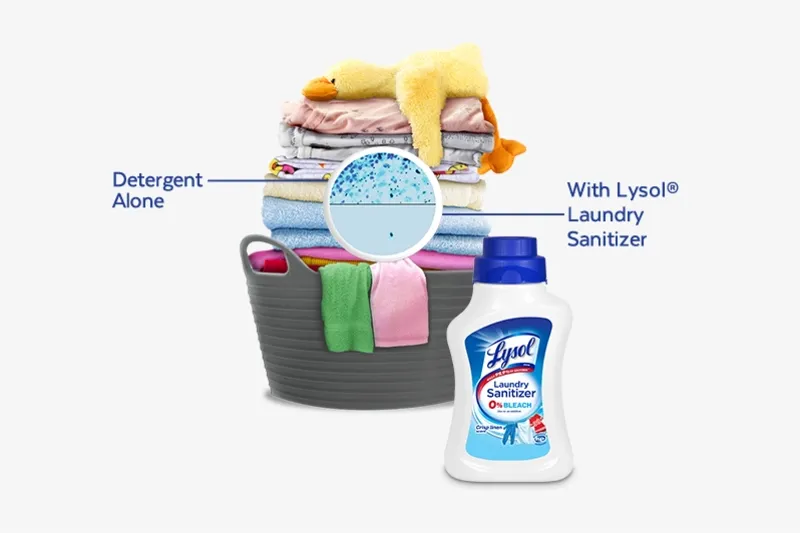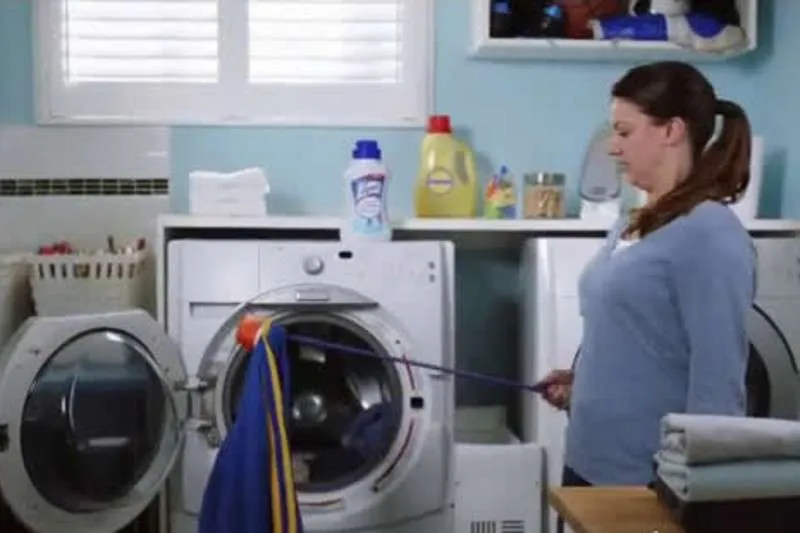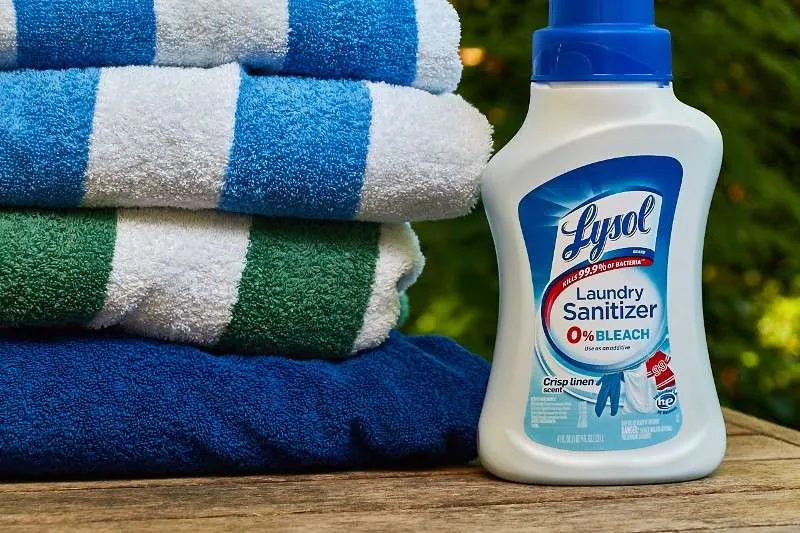Are you looking for a sanitizer to use in your laundry that won’t harm your septic system? Lysol Laundry Sanitizer is one of the products available on the market, boasting powerful antimicrobial properties and proven effectiveness against various bacteria and viruses.
But it’s important to understand if the product is also safe for use with a septic system. In this blog post, we will take a look at what exactly Lysol Laundry Sanitizer does and provide an answer as to whether it truly is septic-safe or not.
Introduction to Septic Systems: Basic Overview and Functioning

Septic systems are a type of onsite sewage treatment system used in areas not connected to public sewerage. They collect and treat wastewater generated from homes and businesses through underground tanks.
This wastewater is then dispersed into soil or landscaping, broken down by bacteria before re-entering the water table downstream. Generally, it’s important to be mindful of what goes into your septic system, as certain chemicals can harm its functioning.
What is Lysol Laundry Sanitizer: A Brief Introduction to the Product

Lysol Laundry Sanitizer is a powerful cleaning agent for hot and cold water. It contains 0.25% active chlorine liquid bleach, which helps to eliminate 99.9% of bacteria and viruses from laundry loads. It’s also certified to remove odors from fabrics.
Can Lysol Laundry Sanitizer be Used in Septic Systems? What the Manufacturer Claims
According to the manufacturer, Lysol Laundry Sanitizer is safe for standard and septic systems. It comprises biodegradable ingredients that won’t harm your septic system and can easily be broken down by bacteria in the tank. Moreover, it contains no phosphorus or other hazardous chemicals, which could cause sludge build-up over time.
The Impact of Harsh Chemicals on Septic Systems
It’s important to note that septic systems are sensitive and can be easily damaged by harsh chemicals. Using a product with too many acidic components could cause the bacteria in your tank to die off, leading to clogs and other issues.
Therefore, it is recommended that you opt for products containing milder ingredients, such as Lysol Laundry Sanitizer, when looking for a sanitizer for use with a septic system. Baking soda and vinegar are also great alternatives to harsh chemicals when sanitizing your laundry.
Lysol Laundry Sanitizer sport is safe for use in both standard and fabric softener dispenser. The fabric softener compartment can also be filled with Lysol Laundry Sanitizer.
Ingredients in Lysol Laundry Sanitizer: Are They Safe for Septic Systems?
Lysol Laundry Sanitizer contains 0.25% sodium hypochlorite (active chlorine bleach) and several other ingredients such as surfactants, preservatives, fragrances, dyes, and pH adjusters. All of these are safe for use in septic systems as they will not harm the bacteria present in the tank or cause a build-up of sludge that could clog up the system over time.
Alternatives to Lysol Laundry Sanitizer: Other Safe Laundry Sanitizers for Septic Systems
If you’re looking for an alternative to Lysol Laundry Sanitizer, several other products available on the market are safe to use with a septic system. These include Seventh Generation Free & Clear Natural Laundry Sanitizer and Clorox Control Bleach Crystals. Both contain chlorine bleach and have been certified safe by the EPA for use in septic systems.
Best Practices for Maintaining Septic Systems: Tips for Keeping Your System Healthy
Although Lysol Laundry Sanitizer is safe for septic systems, it’s important to remember that regular maintenance of your system is vital for its long-term health. Here are some tips for keeping your septic system healthy and running smoothly:
• Pump out the tank every two to three years
• Avoid putting harsh chemicals down your drains – this includes paint thinners, solvents, gasoline, and oil
• Reduce water consumption or invest in a low-flow toilet if you have an older model
• Spread out laundry loads over a week instead of doing them all at once
• Cover up any exposed pipes or tanks in your yard to protect them from debris and damage
• Be mindful of what plants you plant in your yard near the septic system, as some roots can cause damage
• Avoid climbing on top of or digging around the tank, as this could cause structural damage
• Don’t flush anything other than toilet paper down the toilet – no feminine hygiene products, food waste, or other items
• Lastly, use sanitizers that are certified safe for use in septic systems, such as Lysol Laundry Sanitizer.
Following the above tips can keep your septic system healthy and functioning properly for years. Using cleaning products such as Lysol Laundry Sanitizer that are safe for use with septic systems will help ensure your system doesn’t experience any unnecessary damage.
FAQ
Can I use laundry sanitizer with a septic tank?
Yes, you can use laundry sanitizer with a septic tank if it is safe for septic systems. Lysol Laundry Sanitizer contains 0.25% active chlorine bleach and other biodegradable ingredients that won’t harm the bacteria in your septic system or cause sludge build-up. Alternatives to Lysol Laundry Sanitizer include Seventh Generation Free & Clear Natural Laundry Sanitizer and Clorox Control Bleach Crystals, certified safe for septic systems.
What laundry sanitizer is safe for septic?
The safest laundry sanitizer for septic systems is Lysol Laundry Sanitizer, which contains 0.25% active chlorine bleach and other biodegradable ingredients that won’t harm the bacteria in your septic system or cause a build-up of sludge. Alternatives to Lysol Laundry Sanitizer include Seventh Generation Free & Clear Natural Laundry Sanitizer and Clorox Control Bleach Crystals, certified safe for septic systems.
Is OxiClean laundry sanitizer safe for septic systems?
OxiClean laundry sanitizer is unsafe for septic systems due to its high concentration of oxygen bleach. While oxygen bleach is generally safe for use on fabrics, it can harm the bacteria present in a septic system and result in a build-up of sludge that could clog up the system over time. If you’re looking for a safe laundry sanitizer for your septic system, we recommend using Lysol Laundry Sanitizer or another certified safe for septic use.
Is all laundry detergent safe for septic systems?
No, not all laundry detergents are safe for septic systems. Many contain harsh chemicals and other ingredients that can harm the beneficial bacteria in your septic system. We recommend using a detergent specifically designed for septic systems, such as Seventh Generation Free & Clear Natural Laundry Detergent or Clorox Control Bleach Crystals.
These products are certified safe for use with septic systems and won’t damage your system over time. Always read the label before purchasing a detergent to ensure it is septic-safe. Limiting the amount of detergent you use in each load is also important, as too much could cause a build-up of sludge in your septic system. It’s recommended to use no more than one cup per load.
What disinfectant can I use on septic tanks?
You can use Lysol Laundry Sanitizer, Seventh Generation Free & Clear Natural Laundry Sanitizer, or Clorox Control Bleach Crystals on septic tanks. These disinfectants are certified safe for use with septic systems and won’t damage the beneficial bacteria in your tank over time. As always, it’s important to read the label before purchasing any disinfectant and to limit the amount used in each load — no more than one cup per laundry load is recommended.
How many loads of laundry daily are safe with a septic tank?
Limiting the number of laundry loads done in a day with a septic tank is generally recommended. Doing too many loads can cause an overload on the system, resulting in a build-up of sludge and malfunctioning parts. The optimal amount of laundry loads for a septic tank per day would be up to 4-5 loads, depending on the size of your tank.
However, it is important to remember that this is just a general guideline, and you may need to limit the number of loads further depending on the size and condition of your septic system. Consult a licensed professional for advice if you have any concerns or questions.
How do you disinfect laundry sewage?
The best way to disinfect laundry sewage is to use a certified septic-safe laundry sanitizer such as Lysol Laundry Sanitizer, Seventh Generation Free & Clear Natural Laundry Sanitizer, or Clorox Control Bleach Crystals. These products are designed to be safe for use with septic systems and will not harm the beneficial bacteria in the tank.
Limiting the amount of sanitizer used in each load is important — no more than one cup per laundry rinse cycle is recommended. It’s also important to use only septic-safe toilet bowl cleaners and soaps on your fabrics and avoid using harsh chemicals or abrasive scrubbing tools, as these could damage your septic system over time. For any further questions or concerns, consult a licensed professional for advice.
Conclusion
It is important to consider if Lysol Laundry Sanitizer is septic-safe before adding it to any washing machine. It is best to consult a professional or research additional precautions to take when using this product. The ingredients in Lysol laundry sanitizer can cause damage to specialized fabrics that are labeled as “delicate.” Furthermore, care should be taken to ensure the correct amount of sanitizer for each laundry load based on the load size and water hardness.


